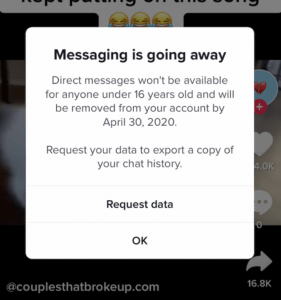This blog was posted with permission from Protect Young Eyes, check out their website at protectyoungeyes.com for more information.
TIKTOK PARENTAL CONTROLS ARE (ALREADY) DECENT
Parents are often surprised to learn that when compared to Instagram or Snapchat, TikTok is actually the only major social platform with parental controls. Meaning, features or functions that a parent can lock in.
We still don’t like TikTok. There’s something so incredibly addictive about this app, along with the horrible challenges we’ve seen during the pandemic. Teenagers are often better off without it and we would just prefer that families wait as long as possible.
But for parents who have allowed it, it’s so important that they understand how the parental controls work!
TikTok’s Digital Wellbeing settings for time control and content restrictions sit behind a 4-digital pin. These features have existed for a while and are better than anything in Snapchat or Instagram.
PARENTS CAN NOW CONTROL TIKTOK REMOTELY
This is the big change. Parents can now choose to pair their device with their kid’s device in order to control the Digital Wellbeing settings remotely. Parents will do this by scanning a QR code on the kid’s TikTok account. Kids can remove the pairing, but parents will be notified.
We love this model! Forcing interaction and (hopefully) conversation about app usage and digital citizenship (a man can dream, right?!). But, having parents interact with their kids in order to enable controls is a really good idea.
Family Pairing, which will be rolling out over the coming weeks, will allow a parent to link their TikTok account to their teen’s and set controls including:
Screen Time Management: Control how long your teen can spend on TikTok each day. In addition, TikTok has partnered with top creators to make short videos that appear right in the app and encourage users to keep tabs on their screen time. These fun videos use the upbeat tone our users love while offering a suggestion to take a break and do something offline, like read a book.
Restricted Mode: Limit the appearance of content that may not be appropriate for all audiences. Even without Family Pairing enabled, parents can help their teen set Screen Time Management and Restricted Mode by visiting the app’s Digital Wellbeing controls at any time.
Direct Messages: Restrict who can send messages to the connected account, or turn off direct messaging completely. With user safety in mind, we have many policies and controls in place for messaging already – for example, only approved followers can message each other, and we don’t allow images or videos to be sent in messages. Starting April 30, we will be taking those protections one step further as relates to younger members of our community, and automatically disabling Direct Messages for registered accounts under the age of 16.
Interestingly, we received the following notification on our teenage test account, which uses an age 13 birthday, affirming the DM change noted above:
Which leads us to a big question – is TikTok all that bad? Its content is no worse than Instagram. Its features are like the other two. It DOES have the “be a star” issue and the videos are highly addictive (even for me!). And even though I don’t plan to say yes to either of them, if I had to give one to my daughter, I think I would select TikTok. The decision is yours! Our complete TikTok app review might also be helpful.
NOW WHAT? HAVE YOU HEARD OF BARK?
Are you interested in having greater insight into the social media platforms that your kids are using? Bark is one of the best platforms we’ve tested. They’re constantly looking for ways to dig further into apps like TikTok, to alert parents. We trust them and we think you should, too!
*There are affiliate links throughout this post because we’ve tested and trust a small list of parental control solutions. Our work saves you time! If you decide that you agree with us, then we may earn a small commission, which does nothing to your price. Enjoy!
Learn More



Chris McKenna, Founder, CEO: A man with never ending energy when it comes to fighting for the safety and protection of children. Chris practices his internet safety tips on his four amazing children and is regularly featured on news, radio, podcasts, and most recently on Capitol Hill for his research. His 2019 US Senate Judiciary Committee testimony was the catalyst for draft legislation that could radically change online child protection laws. The PYE team has performed over 1,000 presentations at schools, churches, and nonprofits. Other loves include running, spreadsheets, and candy.
Instagram: instagram.com/protectyoungeyes
Facebook: facebook.com/protectyoungeyes
Website: protectyoungeyes.com